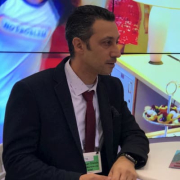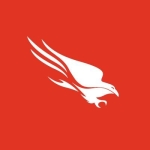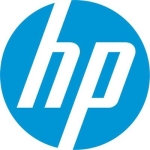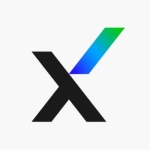What is our primary use case?
We have it installed on all our workstations and servers. Primarily, we started with it after we were hit with a ransomware attack about five years ago. We looked for something that would give us a bit more visibility as to what was going on the network, where the weak points were, etc. We had an antivirus solution (FireANT) back then, which obviously wasn't good enough on its own. So, we went looking for something that was going to be a little more granular in how it gave us visibility on the network.
We have the Cisco AMP for Endpoints Connector on our workstations, which is all done in the cloud. We have Windows Server, Windows 10 workstation environment, and on-premise servers at the moment with some cloud. I guess we would call ourselves a partly hybrid business, with some stuff in the cloud, and all our access points have Cisco AMP on them. This currently includes work-from-home devices, because we have a lot of people still working from home with the coronavirus thing going on, even home users have Cisco AMP as well.
Our operating systems, whether they be Linux, Windows, Mac, or Google Android, are well-protected.
How has it helped my organization?
We now have gained more visibility into what's going on. We had an incident four or five years ago where a member of our staff had a Tor Browser installed on his workstation in the office. I discovered it by chance while doing some work on his workstation. At that time, we had no way of knowing what was going on. Now, between our two Cisco products, we have the capability to see and block that sort of thing going on from the network side. From that point of view, it's straightaway. It has given us the security aspect of not having to deal with people putting Tor Browsers on their workstations to access stuff on the dark web. We have been able to lock that down straightaway, which is good, because that's obviously a big threat to any business. If you don't understand what's going on in and out of your office, whether physically or virtually, then you have no idea what's going on and where your risks are going to be.
It gives us visibility with minimal intrusion. We don't have an on-premise sort of interaction with it, though. It's just a connector that sits on the workstations and servers, then interacts with the workstations or servers through to the cloud. It has very minimal impact on us in terms of performance. They have recently improved the updating of the program. It no longer requires a reboot after a connector update, which is always a handy thing. From that point of view, the impact is better on the business. I can roll out an update to all devices and not have to worry about having reboots, particularly for servers. Thus, the impact has gotten better on the business over time.
The solution makes it possible to see a threat once and block it everywhere across all endpoints and the entire security platform. It has the ability to block right down to the file and application level across all devices based on policies, such as, blacklisting and whitelisting of software and applications. This is good. Its strength is the ability to identify threats very quickly, then lock them and the network down and block the threats across the organization and all devices, which is what you want. You don't want to be spending time working out how to block something. You want to block something very quickly, letting that flow through to all the devices and avoiding the same scenario on different operating systems.
The solution simplifies endpoint protection, detection, and response workflows, such as security investigation, threat hunting, and incident response. We have policies and procedures in place now at the HR user level and also at the machine level to make sure that certain procedures are followed and those procedures are put in place. From that point of view, the Cisco gives us confidence. We don't have to worry too much about threats. This means we can focus a lot more on doing the work we are being paid to do rather than spending time trying to protect the business too much. The fact that we are very quickly able to see what's going on is good in terms of how much time it takes to work through any issues.
We now have a standard rollout of devices with procedures in place. The shared nature where Cisco AMP gets installed on all our devices means we are benchmarking our risk at a level that we're comfortable with. We don't have to deal with managing that risk day-to-day, as the risk level is fairly low in terms of what we're expecting from day-to-day operations. From that point of view, this means we can focus more on the business at hand rather than worrying incessantly about threats to the business.
What is most valuable?
You can see what's going on. It detects a lot of stuff, which is benign, but still detects it as a potential threat or IoC. It has a lot more visibility than traditional antivirus, anti-malware programs. From that point, I feel comfortable that we are seeing everything that is going on. There is a lot of stuff that you don't need to do too much with as it may be a case of some poorly written software executing a potential flag as something of concern. However, at the end of the day, it's nothing to worry about. Therefore, I feel fairly comfortable that we're getting full visibility as best we can on what's going on, and it is better to know what's going on (than not).
Our webpage/portal records all instances of programs accessed on the computer, everything accessed on the internet, all the system processes, and any programs that are running. It then scans them for potential issues. If we installed some software that has a potential issue, we will flag that and have a look to decide whether we want to allow that through or whether to block it.
It shows a lot of stuff going on in the workstations, and to a lesser extent, the servers. Cisco AMP allows us to see within a process what the potential threat may be, for example, on a workstation. That threat may be benign or may be more serious. But, it gives us the opportunity to see those threats, evaluate them, and rate them how we see fit, then do something with them, if necessary. It is now less of an inconvenience on the business from a rebooting aspect.
The console is there running in the background all the time. I can just tap on the console at any point to see what's going on. I usually do this a couple times a day. It allows visibility at any point in time because it's doing this in real-time. There is very little lag. If there are any issues, I get a notification. Then, we can then jump in straightaway, have a look, and assess it.
The tools provided by the solution to investigate and mitigate threats are very comprehensive. Sometimes, they're almost too comprehensive. You can get caught up delving very deep into things that you potentially don't need to. The integrations set it above your traditional antivirus, console-type applications in relation to visibility. It's very high-level in terms of how it works and what it can do.
Cisco AMP offers user access and device protection in a single endpoint security solution. In combination with Cisco Umbrella, it is looking at attacks from a different point or source. It's good enough with these two products to do the job. We don't see a need another particular third-party security software.
What needs improvement?
The biggest area where I liked seeing improvement is in the interface and its interaction with the customer and portal. Since these things are quite technical, it's important that you can find your way around the console quickly without having to remember where things are. I think the interface has improved quite a lot in the last couple of years, which is good, but also the integrations are starting to be incorporated a lot more too. We can see more value in the product as time goes on. It's a different product to what it was when we first got it in terms of visibility and also its user interface.
You need a certain level of technical experience because the console is not the easiest thing to look at. It's very in-depth and there's a lot going on. It does a lot of stuff. I often compare that to our antivirus console, which is pretty self-explanatory, but it is not really doing a lot in terms of its visibility. It will do similar remediation work, but AMP has the visibility. You can see where it's going and what processes are running. Everything that it's tracking can be overwhelming to some people so you need a level of IT and technical experience to understand what it's doing and your way around the console. It's a very high-level product in that respect. Therefore, it might scare a few people off if they're not up to that level. However, if you have someone who can handle it, then it's fine.
There are some features with the integrations that I'm not using because I haven't gotten my head around how they integrate and how best to integrate them into what we're doing. It is just a matter of giving me some time to sit down with a Cisco rep and working through it to understand exactly what these things are doing, then implementing them. I am not one to pay for something that we're not going to use. However, from what I can see, everything that comes with the product is worth doing. Obviously, the threats out there now in the internet world are only getting more complex. Therefore, it makes sense that we keep up with all the technology and software that comes with it.
For how long have I used the solution?
What do I think about the stability of the solution?
I have had a couple of instances in the time that we have had the solution:
- It got too smart for itself and detected an Adobe Reader update as malicious, blocking all PDFs. They remediated that fairly quickly.
- There was an issue with a connector merging at the start of the coronavirus when we were going into lockdown and sending people to work from home. This caused some issues, but they found that very quickly and were able to remediate it. We were able to roll the connector back.
These issues do pop up from time to time. With any software, there can be upgrades and issues that cause problems.
Overall, the stability of the program and software have been very good.
The product has improved considerably over the last 12 to 18 months. They have done a lot of updates to the console and connector. The connector interaction with the workstation has been minimized. The visibility inside the console has improved.
What do I think about the scalability of the solution?
Typically, we have about 120 devices, but we have an extra 60 work-from-home devices at the moment. The scalability is good because we were able to go from 120 devices to 180 very quickly. Therefore, we are able to push devices out very quickly, as needed. There are no issues from my point of view.
We have used the solution as much as we can because we have it on every device that we are using. From that point of view, we have maxed out our utilization because we are using it on every device. On every new device that gets bought in, the first thing that gets put on it is the Cisco products before they touch the Internet and the network, just as a precaution.
How are customer service and technical support?
Our rep in Sydney is a certified Cisco supplier and provider. The company is Outcomex. The rep was involved in the setup of the whole thing. We are still using the company for our Cisco products, which is good.
Outcomex is very good. They have looked after any issues we've had with AMP and Umbrella along the way. There might have been some configuration issues that we've had. We have had a few instances where we have needed a bit of external support, and they have been able to give me support very quickly with a fast turnaround.
There have been a few changes to the software, such as the threat intelligence, Threat Grid and a couple of other packages/integrations. I must admit that I haven't had a lot of time in the last couple of months to really delve into them. It's something I was going to go and talk to my Cisco rep over in Sydney to get more of an idea of how they work and how we can integrate them. I see a lot of tools coming out now, along with a lot of integration tools working with the products, which look very good. I just haven't quite got my head around the implementation and how to get the best outcome out of those tools.
There was a case when our provider said, "You best talk to Cisco directly on that." I think that was only once, but the support was very good. That support request was attended to very quickly.
Which solution did I use previously and why did I switch?
Fortunately, our ransomware attack was way back in the very early days when no one really knew anything about it. However, I had done a bit of reading on it and knew the first thing to do when you see one of those things is to disconnect the machine from the network that is causing the issue. I knew which one it was straightaway, so I managed to disconnect it from the network. Then, the proliferation stopped straightaway. We were able to get stuff from the backup fairly quickly because we have good backup regimes in place, but it was purely by chance that I came across the ransomware as a threat. Although I didn't understand to what extent it went, we were able to mitigate it.
The ransomware attack took probably a good two days of my time fixing and getting things back to normal. It impacted some people in the business world because of where the ransomware got into the network. That was the wake up call, to say, "Hang on. We need something that's going to flag these issues and give us visibility." Our antivirus software was completely benign to it at that time. It had no idea and didn't pick anything up. That's what made us go looking for something. We came up with FireAMP (Cisco AMP). We decided to trial it for a few months and got an idea of exactly what was going on in the network. We did an audit on the network (to start with) and realized that we had some issues. While all stuff was mostly benign and just sitting around the place, it gave us the ability to quickly see what was going on. That was when we decided to go down the path of getting something that would give us that visibility.
The firewalls did their job to some extent. Since then, we have changed our Internet providers and now have a managed firewall. This takes a bit of pressure off me, but we've left AMP in place since we assume that the firewall will let through various things. So, we take the position that we use both Cisco products to protect us from anything that gets through. It is not a matter of just relaxing a bit because we have a managed firewall in place with a lot more security than we probably had five years ago. We still take the view that we need to protect inside the network, assuming something gets through the door, because there are always ways around these things. That's how these things start: They get ahead of a security software before the security software can catch up.
How was the initial setup?
The initial setup was pretty straightforward.
We pushed the deployment out in a day. Once we had the connector configured and policies configured to how we saw best at the time, it was a fairly straightforward rollout. Because it was pushed out through the portal in the cloud, all the devices were rolled out pretty quickly.
The connector updates are very easily done now, and that's improving. Previously, the connector had an issue, where almost every time it needed to be updated, it required a machine reboot. This was always a bit of an inconvenience and a bug. Because with a lot of software now, you don't need to do that and shouldn't need to be rebooting all the time.
The connector updates happen every six to eight weeks. Now, it's just a matter of me saying, "Push out the update," and off it goes. There is minimal time involved, as it's just a matter of me pushing it out. However, I don't push them out automatically. I always hold back a little bit on updates, like Windows updates, because quite often updates come with more problems than they solve. I usually wait a week or so before implementing them.
What about the implementation team?
We did a two-week audit of it to assess what threats we had. That was done with our Cisco rep. He put a device in that sniffed out all the traffic on the network and produced a report to show where our weaknesses were and what we had on the network sitting there benignly. That gave us a benchmark to configure the product in its initial stage before implementing. The rollout was quite easy.
The deployment was done with a Cisco rep and me.
What was our ROI?
Because I was able to get on top of our ransomware attack fairly quickly, I was able to restore stuff from backups. Disruption is time, and we are a time-based business. We have done the numbers. If we had 100 technical people at X amount of dollars per hour charge-out rate, then that gives us an hourly cost as a very rudimentary way of working out hourly cost. Therefore, if we're down for half a day, or even a day, then we can very quickly work out how many dollars we will lose every time we get taken down by an this type of attack.
We haven't paid any ransoms because we didn't need to and we wouldn't do that. However, the other side of that is the downtime, assessing the damage, fixing it up, and then all the subsequent tidying up that goes on afterward, which can go on for a while. It would probably be a couple of days of lost productivity, which is not a huge amount in terms of time, but dollar-wise for a small to medium-businesses, it can be quite substantial in a month.
We haven't had to spend time dealing with too many threats. That time is minimized in terms of how much we need to spend.
The solution has decreased our time to remediate. We do a lot of stuff automatically, but we can manually go in and apply remediation straightaway on devices at a device and policy level. We can apply this throughout the business, which is what we want. If we see a threat at some particular level, we can make a decision to go in straightaway and tackle that threat through manual intervention because you can't blindly put your faith into something and expect it to do everything for you. You have to manage it and be proactive at all times. However, the amount of time spent doing the manual intervention is minimized.
What's my experience with pricing, setup cost, and licensing?
The pricing and licensing are reasonable. The cost of AMP for Endpoints is inline with all the other software that has a monthly endpoint cost. It might be a little bit higher than other antivirus type products, but we're only talking about a dollar a month per user. I don't see that cost as being an issue if it's going to give us the confidence and security that we're looking for. We have had a lot of success and happiness with what we're using, so there's no point in changing.
There is also the Cisco annual subscription plus my management time in terms of what I do with the Cisco product. I spend a minimal amount of time on it though, just rolling out updates as they need them and monitoring the console a couple of times a day to ensure nothing is out of control. Cost-wise, we are quite happy with it.
Which other solutions did I evaluate?
We did look at another solution. At the time, there wasn't a lot of software for small to medium-businesses.
I was looking for something with a business name reputation behind it that would give us a good level of security. That's why we went with the Cisco solution. We initially went with Cisco based on its name in the industry, and we have been very happy with it.
Cisco AMP comes with an in-built antivirus, but we have another antivirus that we use. Though AMP works whether you use their antivirus or not, it doesn't matter, we thought, "If we use a separate branded antivirus, they may have some extra sort of pickups that the AMP antivirus may not," to spread the risk a little. We have some other systems in place internally in terms of how we protect file installations and macros running on the network. Therefore, we do add extra layers of security that we feel that we need. However, we are confident that this will pick up most of this stuff along the way.
What other advice do I have?
At the start, we realized how much we didn't know what was going on in the network and where all the endpoint weaknesses were. That opened eyes up straight away to the risk that was involved. Then, we did the numbers, and said, "For us, risk is downtime, and time is dollars." We just did the sums very quickly and worked out what it would cost us if we didn't have any idea what was going on in the network and got hit by something that we should have been aware of. Because if the software is out there and gives you this type of visibility, you should be using it.
We do use it with another Cisco product, Cisco Umbrella, which is a DNS-level content-filtering, web-filtering software. That has had an impact on the business world in terms of restricting a lot of stuff which may have come in for some web pages or websites that may not have been secured. We have seen a reduced impact on the business because we're using the two Cisco products together.
I would give Cisco AMP a nine (out of 10). It is as good as anything out there. I can't see any reason why we would look elsewhere for a product. It does the job it's meant to do and is improving all the time. We have been very happy with it.
Which deployment model are you using for this solution?
Hybrid Cloud
Disclosure: PeerSpot contacted the reviewer to collect the review and to validate authenticity. The reviewer was referred by the vendor, but the review is not subject to editing or approval by the vendor.

















